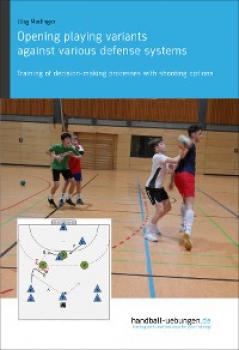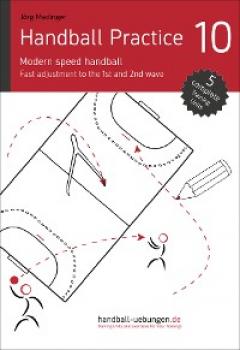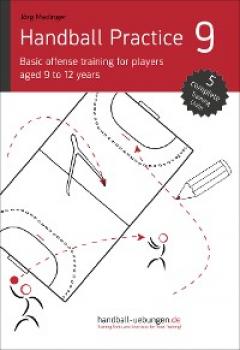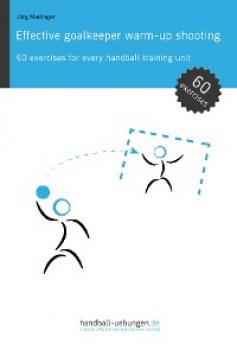Спорт, фитнес
Различные книги в жанре Спорт, фитнесЛУЧШАЯ ВЕРСИЯ СЕБЯ
Журнал GQ (Gentlemen's Quarterly) – это уникальный формат мужского журнала, сочетающий в себе непревзойденные стандарты качества глянцевого издания и интеллектуальный потенциал репортажной и аналитической журналистики самого высокого уровня.
ПЯТЬ КРУГОВ ВАДА
Журнал GQ (Gentlemen's Quarterly) – это уникальный формат мужского журнала, сочетающий в себе непревзойденные стандарты качества глянцевого издания и интеллектуальный потенциал репортажной и аналитической журналистики самого высокого уровня.
Ventoux
A boys’ book for both men and women, a spot-on depiction of a typical male friendship, but written in a sensitive, subtle manner. • Lead title with AFP of 30,000 copies
• International bestseller—over 200,000 copies sold in Europe
• Glowing reviews in the UK, including the Guardian. World Edition’s UK bestseller!
• 1200 galleys, ABA White Box mailing
• Esp. for cycling aficionados. Target strong cycling communities in New York and California
• Authors visit in July 2020—biking tour through NY for journalists and booksellers led by the author
• Perfect for Father’s Day with high spikes in sales every year
• Tie-in promotions around Tour de France in July 2019
• Author has over 50,000 followers on Twitter
• A stunningly accurate depiction of male friendship
• During the summer of 1982, six friends—five boys and one girl—climb the legendary Mont Ventoux in Provence on their bicycles. A tragic accident claims the life of one of them. Thirty years later, the old friends return to conquer the mountain and the demons of their past.
• Especially recommended for cycling aficionados who will recognise Mont Ventoux as the scene of many classic races.
• ‘Funny, shrewd and moving, with a complex structure that never feels cumbersome, and a finale so intense that you want to read it very slowly, almost one word at a time.’ ―The Guardian
• Compared to Tim Krabbe’s international bestseller “The Rider”
One Game at a Time
• Matt Hern tackles the issues of sports from a much needed left perspective. Sports are the most significant uniting force in our culture, yet the Left has thus far shied away from engaging in this vital platform.• This book tackles the fundamental aspects that draws us to sports. Specifically the most authentic experiences we gain as athletes and fans. • High art and sports are not dissimilar, and Matt Hern shows us how the only differences fall along class and cultural lines. • Matt Hern asks us why struggle, pain and hardship hold a paramount sense of authenticity culturally. What is it about playing and watching sports that seems to engage us on a universal human level?• This book speaks not only to sports fans, but specifically to non-sports fans illustrating the importance of engaging as both an observer and a participant in the world’s greatest pass time.
Walking on La Gomera and El Hierro
Walking guide to the islands of La Gomera and El Hierro. The 45 waymarked routes in this guidebook include easy strolls and hands-on scrambles, day walks and long-distance routes including the GR132 and parts of the GR131, which runs the whole length of the Canary Islands.
Walks are spread in the guide roughly clockwise and where walks are located beside each other, links between them are often possible, giving you the opportunity to make your own alterations. The routes are described over both islands, with 27 walks on La Gomera and 18 on El Hierro, illustrated with clear contour mapping and inspirational photography.
The two smallest of the Canary Islands are no less rugged than their volcanic neighbours, offering a wide variety of little-known walking terrain from steep-sided barrancos and dramatic cliffs to the gentler slopes inland cloaked in laurisilva and pine forests.
Skye's Cuillin Ridge Traverse
This two-volume guidebook provides detailed coverage of the iconic Cuillin Ridge, a 12km traverse on the Isle of Skye. Over two volumes, this guide covers everything needed to prepare for and complete a successful traverse over this spectacular ridge. Showcasing the main traverse and the other classic scrambles in the area, both volumes feature official Harvey mapping, numbered topos and corresponding detailed route description.
The first volume provides notes on training, gear and logistics, alongside 10 classic scrambles that can be used as practice routes for the traverse of the whole ridge. This volume also includes in-depth route description and advice for completing the traverse in winter. The second volume focuses on the traverse itself and is the perfect booklet to carry while attempting to complete this renowned scramble. Across ten sections, it explains step by step how to tackle the ridge, as well as providing easier climbing alternatives (Cuillin Ridge Light) for the harder climbing sections.
The ridge can be completed in one or two days, either as TRIAD (the ridge in a day) or CREST (Cuillin Ridge Expedition Style Traverse). The first volume provides advice about which approach to choose, as well as a list of bivi sites on the Ridge for those who choose the CREST option. By also providing an appendix of further reading and useful webcams, this guide offers everything needed to get inspired and get out on the Cuillin Ridge.
Opening playing variants against various defense systems
Apart from individual technical and tactical skills, practicing different systems of cooperation may be useful to structure the offense play and force the defense to move in order to score a goal.
This textbook gives detailed step-by-step descriptions of initial actions and possible options for continuous playing against different defense systems. The playing variants aim at creating situations through team play in which the players are able to eventually shoot at the goal. If this is not possible because the defense players are very well-positioned, there are various continuous playing and subsequent shooting options explained in this book.
The first chapter initially deals with simple cooperations such as crossings, parallel piston movements, and interactions with the pivot – the essential building blocks for many of the subsequent 6-on-6 playing variants. In the other chapters, we will present examples of how to overcome passive and active defense cooperations.
A lot of the opening playing variants can be modified and used against other defense systems as well. It would be ideal, however, if the players practiced their decision-making processes in such a way that they are capable to react to changing situations and to adapt their playing creatively. This way, playing variants could be modified and extended spontaneously and lead to new shooting options over and over.
Part E deals with fast break playing options and playing options following a fast throw-off. The two last chapters focus on offense play against outnumbered defense systems, whereas the main focus will be on playing with an additional field player (goalkeeper substitution) and playing a subsequent attack in numerical superiority with a seventh field player following a time penalty against the defending team.
Included contents: Part A: Cooperation in small groups Part B: Opening playing variants and playing concepts against a 6-0 defense system Part C: Opening playing variants against a 5-1 or 3-2-1 defense system Part D: Opening playing variants against a 4-2 defense system Part E: Fast throw-off and second-wave fast break Part F: Goalkeeper substitution: Playing 7-on-6 or 6-on-6 in outnumbered situations Part G: Playing against an outnumbered defense of 5 players
Handball Practice 10 - Modern speed handball: Fast adjustment to the 1st and 2nd wave
Dear reader Thank you for choosing a book of the handball-uebungen.de training guide series.
Fast breaks are an important factor for successful handball game outcomes in modern handball. Further positive aspects include motivation of the team through quick goals in connection with demoralization of the opposing team as well as improvement of the attractiveness of the handball game itself. Quick adjustment from defense to offense play after winning the ball (or after a fast throw-off following a goal) in order to take advantage of the off-guard situation and score a goal through increased speed of play is the central objective of speed play with fast breaks.
From winning the ball and – quickly adjusting from defense to offense play – to initiating the first or subsequent second wave – and a well-structured action following the second wave – or the fast throw-off all these fast break elements are dealt with during the following five training units.
The first two units focus on fast break initiation and the improvement of passing precision and passing decisions for a first wave as well as carrying the ball forward after gaining ball possession. The third unit focuses on the decision-making process in outnumbered situations that may be created during the first or second wave, whereas the last two units practice well-structured playing against an off-guard and passively acting defense formation.
With these five training units, the collection offers ideas and incentives for practicing the individual fast break phases and provides the opportunity to implement a comprehensive concept that involves both the first and second wave and the fast throw-off.
This book contains the following training units: TU 1 – Improving passing precision when initiating the first wave The objective of this training unit is to improve running paths, passing and the decision-making process during the first wave. After a warm-up running exercise, the subsequent short game already includes quick adjustment exercises and long passes. During the ball familiarization phase and the goalkeeper warm-up shooting, the players practice playing long passes before they combine several actions with first wave initiation in a series of shots. The closing small group exercises finally focus on making passing decisions.
TU 2 – Quick adjustment to a fast break after a defense action ( ) The objective of this training unit is to practice the quick adjustment from defense play to fast break initiation. Following the warm-up phase with a coordination run exercise and the ball familiarization phase, the goalkeeper warm-up shooting combines a preparatory defense exercise and a series of shots for the goalkeeper. During the two subsequent defense exercises, the players practice quick adjustment from defense work to fast break countermovement. A 4-on-4 game and a sprint contest complete this training unit.
TU 3 – Improving speed play for fast break situations The objective of this training unit is to improve free play in fast break situations. Following warm-up and a short game, the players play long passes during the ball familiarization phase which will be further developed in the goalkeeper warm-up shooting exercise. This is followed by a series of shots requiring precise passes. Afterwards, the players practice free play in outnumbered, open situations during fast breaks. A closing game with gradually increasing complexity completes this training unit.
TU 4 – Developing a well-structured second wave by implementing long crossing moves and options for further playing The objective of this training unit is to develop a long crossing during the second wave. Following a warm-up running exercise, a short game, and a ball familiarization exercise, the players initially develop the long crossing during the goalkeeper warm-up shooting phase. In the subsequent series of shots which will be combined with a 1-on-0 fast break, the players practice the long crossing with compensation of the center back player. Defense players and the pivot are added for the two subsequent small group exercises, before the players implement the course 4-on-4 during the closing part of the training unit.
TU 5 – Step-by-step development of initial actions after a fast throw-off The objective of this training unit is to develop a simple initial action after a fast throw-off. Following warm-up and a coordination run exercise, the players practice the basics during the ball familiarization phase and the goalkeeper warm-up shooting. During the three subsequent exercises, the players further develop the running and passing paths and eventually combine them in order to create an initial action. In the closing game, the players implement what they practiced before.
Handball Practice 9 - Basic offense training for players aged 9 to 12 years
The five training units in this book focus on training of handball basic skills for young players aged 9 to 12 years. The individual training units deal with passing precision, shooting movements, dribbling technique, breaking away from man coverage, and passing feints, respectively. The players develop the individual skills methodically and step by step from basic to complex level. You may adjust the complexity of the exercises to your team’s level of performance by intensifying the individual drills.
This book contains the following training units: TU 1 – Improving passing precision during running movements The objective of this training unit is to improve the passing precision during running movements, in particular. Following warm-up consisting of combined running moves and passing variants and a short game, the players practice passing while running at full speed during the ball familiarization phase. The goalkeeper warm-up shooting and the subsequent series of shots also focus on playing passes while running at full speed. A second series of shots combines double passes on a defined running path with quick passes in direction of the goal. Finally, the players practice playing precise passes under pressure in a small group game and a closing game.
TU 2 – Developing and improving the shooting movement This training unit focuses on acquiring and improving correct shooting movements. This means shooting while standing and shooting while running, without a jump however, in order to highlight arm and body movements. Following a warm-up exercise which already involves shots, the players practice the shoulder and arm rotation for shooting and subsequently combine these moves in a passing competition. In a short game, the players implement the shooting movements in a game situation. This is followed by the goalkeeper warm-up shooting and a closing series of shots which focuses on shooting at the goal. TU 3 – Improving the dribbling technique while observing the game situation The objective of this training unit is to improve the dribbling technique focusing on simultaneous observation of the game situation. The players combine movements with dribbling already during the warm-up exercise; in a sprint contest and a short game, they practice dribbling at increased speed. Following the goalkeeper warm-up shooting, there will be a series of shots with additional coordination tasks in which the simultaneous observation of signs will be added. The subsequent small group exercise demands observation of the game situation while dribbling the ball. In a closing game, the players should implement what they practiced before.
TU 4 – Breaking away from man coverage using running feints This training unit focuses on breaking away from man coverage without a ball, by means of running feints. Following warm-up, a sprint contest with changes of direction, and a team ball variant, the players practice quick changes of direction one more time during the goalkeeper warm-up shooting exercise. Subsequently, there will be an individual offense exercise focusing on breaking away by means of running feints. The players will further elaborate this topic in two small group exercises and finally implement what they practiced before in free play.
TU 5 – Gaining positional advantage using passing feints The key topics of this training unit are passing feints and how to combine them with a breakthrough or a return pass to a teammate. Following a warm-up running exercise, the players already learn how to pass the ball cleverly in a short game; this will be further developed in the ball familiarization phase. In the goalkeeper warm-up shooting exercise, the players practice passing feints in combination with a 1-on-1 breakthrough; in the subsequent series of shots, they combine the passing feint with a return pass to their teammate. Both variants will be implemented twice in the subsequent 1-on-1, 3-on-2, and 4-on-4 games.
Effective goalkeeper warm-up shooting
Goalkeeper warm-up shooting is essential for almost every training unit. These 60 warm-up shooting exercises provide you with a variety of ideas to make the warm-up shooting challenging and diverse, both for the goalkeepers and the field players. The exercises particularly focus on improving the players’ dynamics even during the warm-up shooting.
The exercises are illustrated and described in an easy, comprehensible manner. They can be immediately integrated in every training unit. Whether you combine the exercises with additional coordination drills or use them as an introduction to the main part – various difficulty levels allow for adjustment of the warm-up shooting to each training unit and age group.









